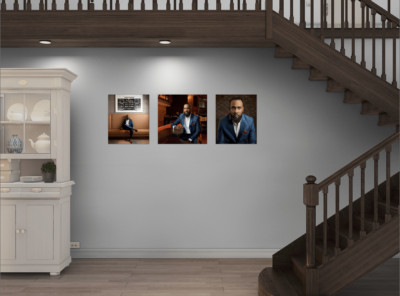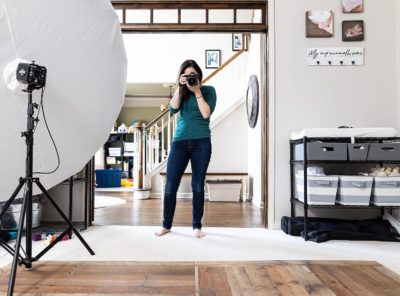How to Display Photos in Your Home
Saying you want to print your gorgeous portraits is one thing, but what’s the best way to display your photos in your home? Not only are there numerous print options, but you’ve got a zillion places in your home to choose from as well! Even if you don’t think you have an artistic eye for home design and decor, you can follow some simple principles that will always look great. I’ll walk through the different options for printing your images and then provide some tips and tricks for how to display photos in your home.

How to Display Photos In Your Home
Single Print
Your standard starting point, a single image. These can go anywhere – tables, shelves, walls, wallets, and more. You can also do these at any size. The easiest way to fit a variety of applications, you can never go wrong with a single printed image.
Folio Box
I love folio boxes. These are some of the most versatile print products available. Essentially, think of a protective, decorative cover that houses a series of loose prints. There are endless different styles, materials, shapes, and sizes for folio boxes. Some Folio Boxes work like a small treasure chest made of wood, while others look like large envelopes or albums made of high-quality leather or other luxurious materials. Each Folio Box holds a selection of prints. These can be loose or matted, and the quantity can vary from 5 to 20 matted or 100 loose prints.
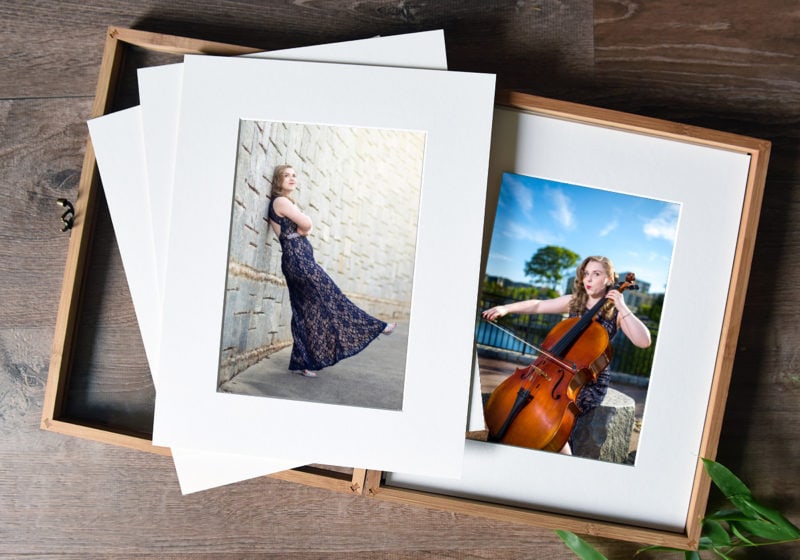
Folio boxes are excellent because you can cycle through images. You can use some prints from the box for wall displays, shelves, etc., and others can stay in the box. When you want, simply rotate which ones are out vs. inside. Folio boxes make for incredible coffee table decorations and are always excellent conversation starters. It’s lovely to take an image from the box and enjoy it in your own two hands.
Collages
Most commonly found on the walls of your home, collages are an assembly of individual prints arranged in an aesthetically pleasing manner. Collages are fun because you can tell different stories based on which portraits you select and how you place them. Many collages are of a single portrait session, like family photos, but you could also do a diverse assortment of images that inspire a unified mood or tone when combined. These are great for living or family rooms where you typically have more space to display your artwork.
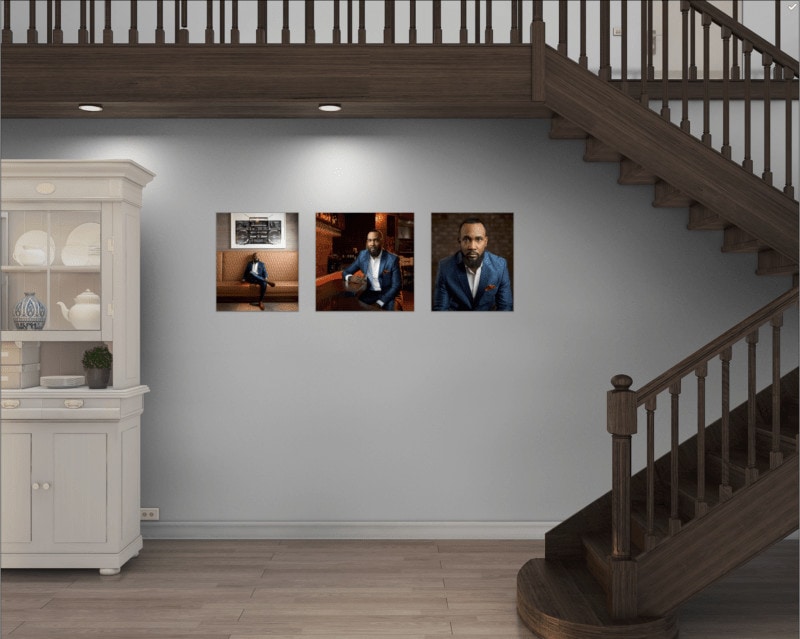
Beyond which images you select, you can also mix and match the sizes and orientations of the individual images relative to each other. For example, you can arrange a series of big and small portraits to create patterns by aligning them evenly, or you can go for organized chaos by varying the spacing between the pieces and making each one a unique size. You can even take a single image and spread it across multiple collage elements, which is called a “Split Collage.” The options are endless.
Album
A classic for weddings, newborns, and boudoir – albums are often a forgotten way of displaying your images. Like folio boxes, albums are infinitely customizable with different sizes, cover materials, cover patterns, cover text, page materials, and print finishes. And that doesn’t even include the images in the album and how you arrange them! Albums are best for telling stories and holding onto memories that maybe you don’t want on your walls all the time. You can easily store an album and enjoy it when you like, or put it on a coffee table as another decorative element. In my experience, albums typically last the longest of all the print products. That’s why they’re so popular for weddings – they often make it into the hands of grandchildren and beyond!
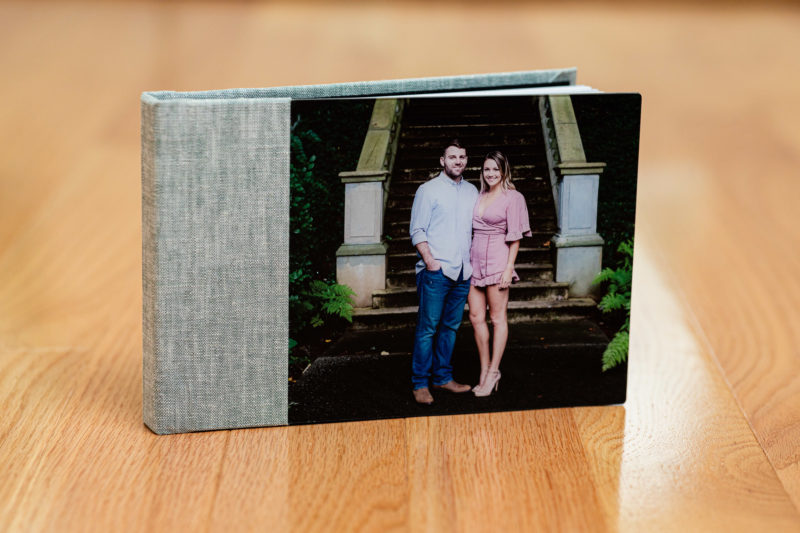
Different Print Styles
In addition to different ways to display photos in your home, there’s also the print medium. Each one has a unique quality and appears differently.
Standard Paper Prints
Pretty straightforward, except it’s not. Most people think of a standard paper print as the reflective, rich paper and colors from Walgreens, CVS, and the like. Well, that’s because that paper type is the most widely available and one of the cheapest to produce. However, other print styles affect the boldness of the colors, how crisp the image looks, how reflective the paper is, and more. On a high level, the most common ones are lustre, matte, glossy, and metallic. This blog post by ShootProof does a fantastic job breaking down the differences.
Matted Prints
The next step up from a standard paper print is to add a matt. These are sleeves that house your photo to add a border and protection. Matts are helpful because they make your paper prints rigid, and they prolong the life of the print by giving you a different surface to grab onto than the print itself. They usually come in black or white.
Framed Prints
A classic style, you simply take a standard paper print and put it in a frame. Framed prints are handy because they’re widely available, and you can get all sorts of frame designs. Frames are fun because you can select ones that make your images pop more and match the rest of your room’s decor. High-quality frames are made from wood or metal, with lower-cost options available in plastic or cardboard. Another benefit of framing your print is that it provides mounting options. You can stand the frame up on a flat, horizontal surface or hang it on your wall. Framed prints can hold paper prints by themselves or matted prints to add some more dimension and style. Some frames also include a clear acrylic piece that goes in front of the photographic image. This piece helps cut down on reflections and protects the print. However, this combination can get very heavy when you get to larger framed print sizes over 11×14 inches.
Canvas Prints
Canvas is a cloth-based material, which most are familiar with as a painter’s medium or for decoration. It’s hardy, lightweight, and has a unique texture to it. I love Canvas for printing because you get a 3-dimensional look since the images wrap around the frame. It’s also significantly lighter than regular framed prints, so I always recommend Canvas for large wall art pieces. Another benefit is that Canvas is not super reflective, so if you place your prints in a room with lots of artificial light, you won’t see those light sources in the prints.
Metal Prints
Exactly what it sounds like, your images are printed directly onto a metal surface. Most print labs use aluminum because it’s lightweight and sturdy. You can choose between different application methods (how the image is printed onto the metal), which affect how reflective the surface and the resulting portrait look. Metal prints are stunning with the boldest and richest colors I’ve ever seen on any print material. They tend to be pretty reflective, so be mindful of where you plan to display your print in your home. Metal prints are also relatively lightweight, which makes them stellar for wall art.
Where to Display Photos In Your Home
There is honestly an infinite number of places to display photos in your home. Some areas are better than others, though, depending on the image’s subject matter, such as if the pictures are landscapes vs. portraits of you. Below is a list of just a few examples of where to display your photos on walls, shelves, or tables.
- Bedroom
- Great for family, wedding, personal, or boudoir portraits.
- Office
- Family, sports, and anything that makes you feel motivated and grateful.
- Hallway
- I like hallways for extended family portraits.
- Living Room
- Family portraits, wedding photos, travel, and abstract images go well in living rooms.
- Bathroom
- I like abstract or quirky photos for bathrooms, but I also have a twisted sense of humor.
- Kitchen
- Family photos, wedding portraits, abstract, and travel photos are my personal favorites for the kitchen. Oh, and of course, food!
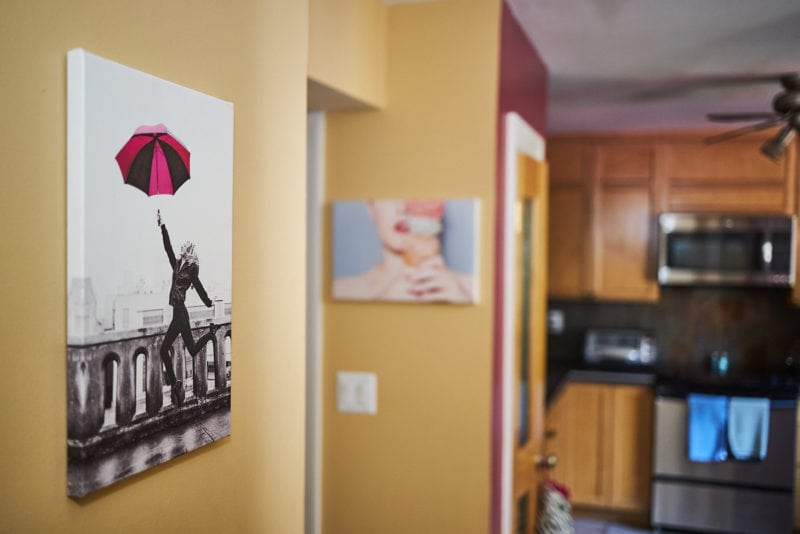
General Styling Notes Displaying Portraits In Your Home
Achieve A Balanced Display.
The mind works in mysterious ways! Place bigger photos to the left and smaller ones to the right. Our eyes typically go from left to right, so this arrangement helps make sense in our brains and appears more aesthetically pleasing.
Take The Environment Into Account.
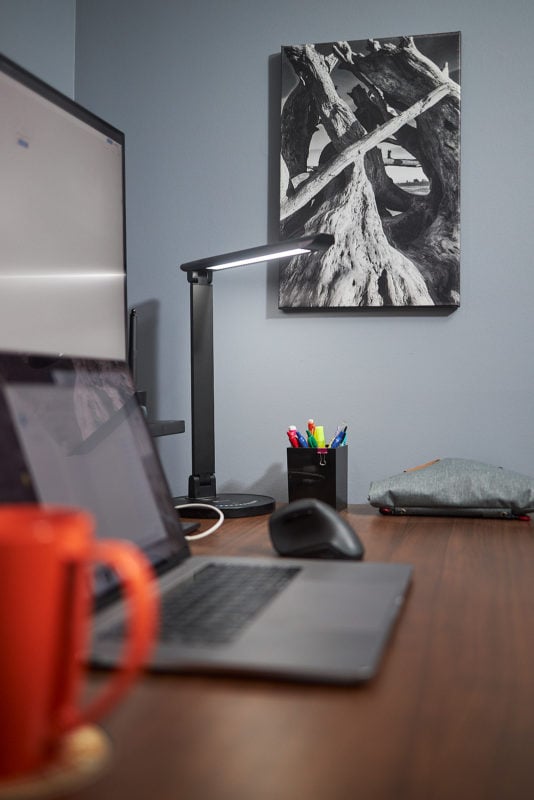
Think about what else is in the room, accessories included! This includes lamps, chairs, blankets, pillows, plants, etc. Where you place your displayed photos relative to these items will change how you see your artwork and how the overall room appears.
As A Grid
If all your images have a similar color scheme, you can create a really cool wall display by tightly arranging them in a grid pattern to form a square or rectangle.
Think Of A Color Scheme
Find images with colors that match elements of the room they’re displayed in. Maybe that’s a portrait containing an orange shirt that coincides with an orange chair in your kitchen. Or if the room has white walls, think about going with black & white pictures.
Check The Scale Of The Gallery Wall
How large your print is relative to the object it’s placed over is key to it looking like it belongs. Whether a single image or a collection of images, the total width should either be the same or up to 2/3rds the width of the item it’s above (like a chair or a dresser).
Display Photos In Unexpected Places
Have fun with it! I have a picture of a girl in a bathtub filled with popcorn in a classic pin-up style in my home’s half bathroom. It’s a great conversation starter! Place prints in random places that garner attention.
Layer Frames
This is ideal for small horizontal surfaces like a shelf or bookcase. Start with the larger frames in the back and then get smaller as you come forward. Mix and match the frame sizes and styles to give it a textured look. You’ll need to play with it to find the magical arrangement so be patient and be ready to play with options.
Display Photos in Groupings
You’ll want to assemble your photos to be similar in some way. For instance, you’ll want to go all black and white together for a modern look. When doing prints with colors, try to find a similar color palette that brings them all together and looks homogenous. You’ll also want to stick to odd numbers if you have a smaller quantity of prints. Human brains are weird, and odd-numbered groupings tend to be more visually appealing than even ones. Lastly, when grouping frames on a wall, you’ll want to ensure the proper spacing. The rule of thumb is less than 2 inches apart for smaller frames and approximately 4 inches apart for larger frames.

Image Size Vs. Subject Size
The smaller the print, the larger the subject needs to be in the frame. This rule creates a good balance for eye relief since you don’t want guests to be a nose-length away from a print to determine the subject. On the other hand, you can go with smaller subjects when prints are large because you can stand back to appreciate the breadth of the image but still walk up close to it and appreciate the detail.
Get The Height Right
When mounted on the wall, you’ll want the center of your images or collection of images to be eye-level. This gets tricky as you need to think of how you use that given space. If it’s the kitchen, you may be standing more, so placing prints higher makes sense. If it’s the living room where you’ll primarily be seated, put the bottom of the frame about 4 inches above the back of the sofa or table it’s mounted above.
Maintenance and Protection: Preserving Your Memories
Proper Care: Ensure Longevity
To preserve the quality and longevity of your displayed photos, follow these maintenance tips:
- Avoid Direct Sunlight: Protect your photos from direct sunlight, as it can cause fading and discoloration over time. Hang them in areas where they are shielded from prolonged exposure to harsh UV rays.
- Dusting and Cleaning: Regularly dust the frames and glass to keep them clean and free from debris. Use a microfiber cloth or a soft brush to gently remove dust and avoid harsh cleaning chemicals that may damage the photos or frames.
- Temperature and Humidity Control: Avoid hanging photos in areas with extreme temperature fluctuations or high humidity levels, such as bathrooms or near heating vents. Maintain a stable and moderate environment to prevent damage.
Rotating and Refreshing: Keeping It Dynamic
To keep your photo displays fresh and engaging, consider rotating and updating them periodically. Swap out photos, rearrange the arrangement, or introduce new elements to breathe new life into your home’s decor.
Further Ideas
If you’d like some more ideas for how to display photos in your home, check out this article of 40 stylish ways to display family photos and this article for 16 photo display ideas for pictures.

